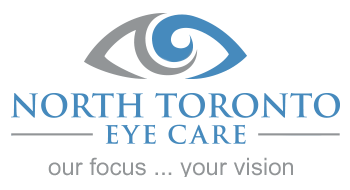Those with diabetes know that this common disease can come with unanticipated side effects. One of these complications is diabetic retinopathy, a prevalent eye disease occuring in the diabetic community.
Diabetic Retinopathy is manageable, and permanent vision loss can be prevented with early detection and treatment. The eye care specialists at North Toronto Eye Care are experienced in the detection and treatment of this disease, and can help you to manage its progression.
To raise awareness of diabetic retinopathy, we wanted to share some facts with our community regarding this stealthy eye disease.
Here are the top 4 facts about diabetic retinopathy you need to know:
-
Diabetic Retinopathy is caused by chronically high blood sugar levels.
Over time, high blood sugar can damage the blood vessels in the retina, leading to diabetic retinopathy. This damage can cause fluids to leak from the blood vessels, which disrupts how the brain interprets light and converts it to signals in the brain.
-
There are no early symptoms of Diabetic Retinopathy
At its onset, diabetic retinopathy does not present symptoms. The disease progresses over time, gradually causing vision loss. Because of this, it is very important for those with diabetes to schedule annual comprehensive eye exams with their doctor to screen for the disease.
-
Diabetic Retinopathy is manageable.
Those with type 1, type 2, or gestational diabetes can prevent diabetic retinopathy through the ongoing management of blood sugar levels and annual dilated eye exams. The early detection and treatment of Diabetic Retinopathy can substantially reduce the risk of blindness to a patient by as much as 95%.
Studies additionally show that controlling diabetes and managing blood sugar levels can slow the onset and development of diabetic retinopathy. Lifestyle habits that help to prevent vision damage and promote control of diabetes are taking your medicine as prescribed, maintaining a healthy body weight, engaging in physical activities, controlling blood sugar, pressure, and cholesterol, and avoiding smoking.
-
There are multiple treatment options for Diabetic Retinopathy.
Treatments for Diabetic Retinopathy include scatter laser surgery, Anti-VEGF treatments, and vitrectomy.
Scatter Laser Surgery: This treatment involves making 1,000 to 2,000 small burns in the retina, which cause abnormal blood vessels to shrink and prevents leakage of fluid.
Anti-VEGF: This treatment method involves the injection of anti-VEGF drugs into the vitreous gel of the eye – this medicine blocks VEGF (vascular endothelial growth factor) proteins, which stimulate blood vessels to grow and leak fluid.
Vitrectomy: A vitrectomy is the surgical removal of vitreous gel from the eye. This procedure is used when bleeding has become severe – this is a medical procedure that generally requires the eye to be covered with a patch for several days while the eye recovers.
If you have diabetes, you may be at risk of developing diabetic retinopathy. Speak with your eye doctor today about options to protect and maintain your eye health and vision!
